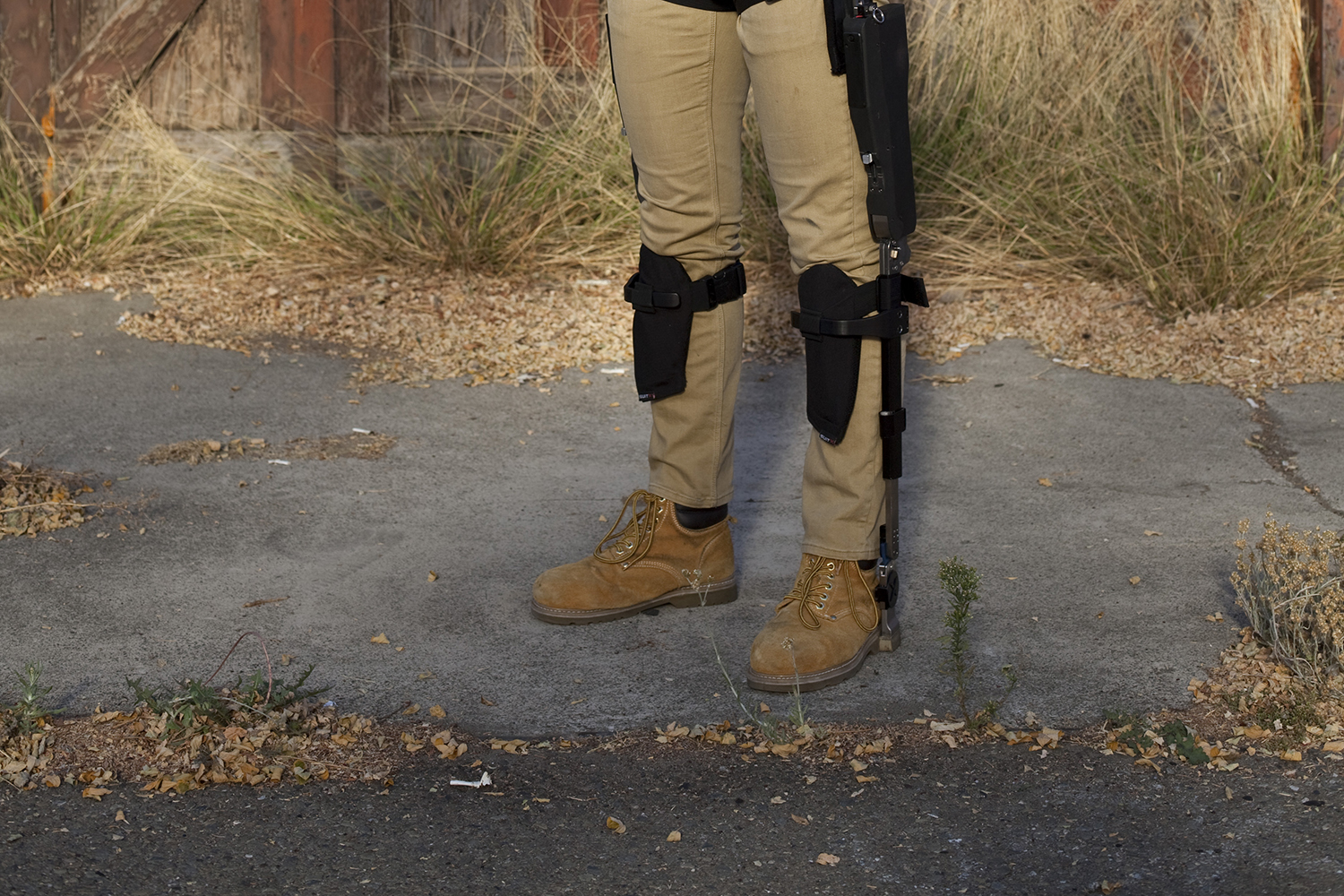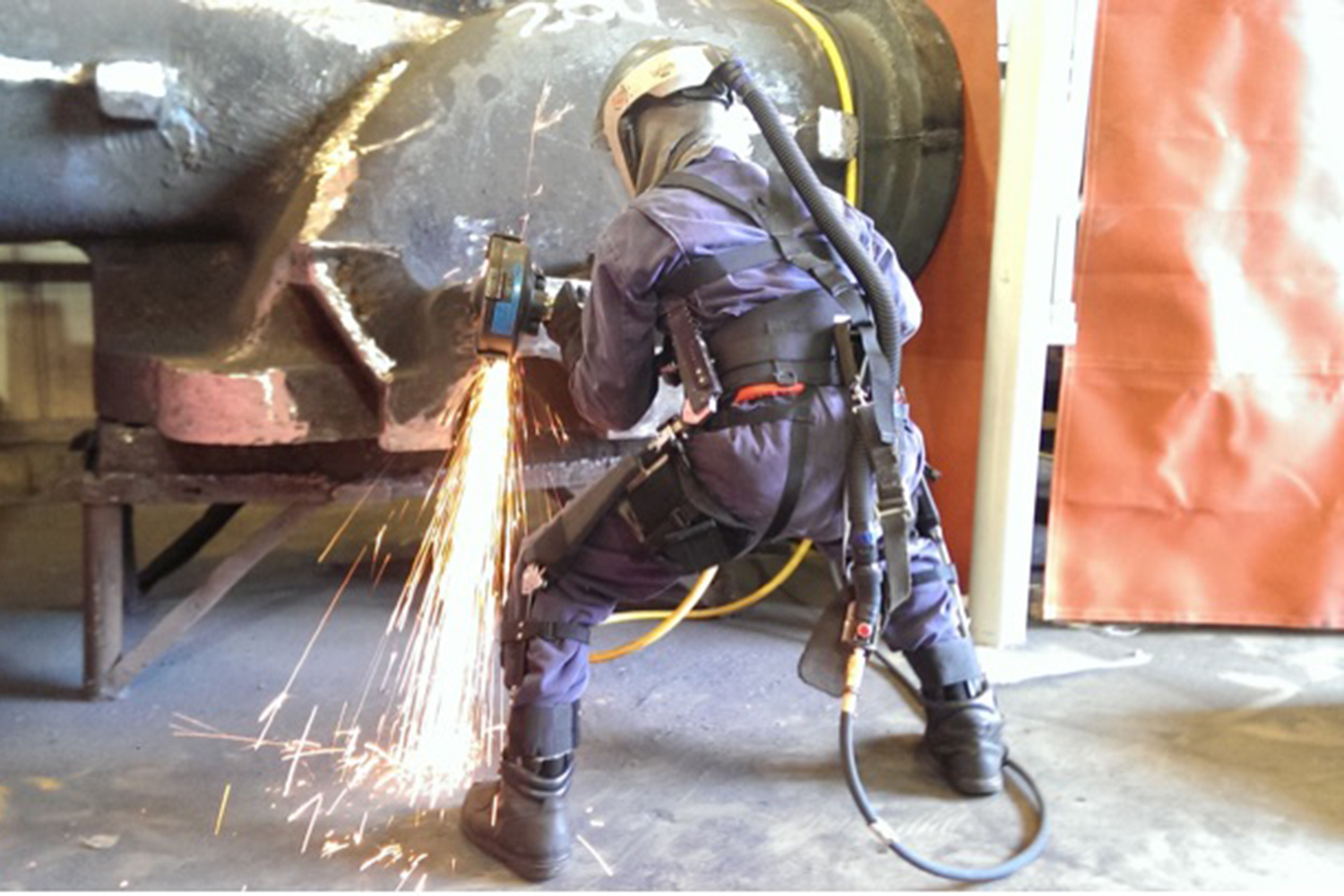MAX consists of separate back, shoulder, and leg modules, which are intended to be worn together or independently, depending on need. The three modules are called backX, legX, and shoulderX.
The 4.5-pound back support module helps reduce torque and force on the lower back by up to 60 percent, according to a recent study by researchers from the University of California, Berkeley, which is affiliated with SuitX.
The legX module reduces forces on leg muscles and knee joints during tasks that require heavy lifting or squatting. Although the device weighs more than 9 pounds, SuitX says the wearer does not bear the weight.
ShoulderX is an industrial arm that augments the wearer’s ability to perform chest-to-ceiling movements. The device weighs between 10.6 and 12.4 pounds depending on how many arms are attached — not an insignificant weight to carry but one that the company thinks is worth the benefit.
Each system is able to distinguish between the wearers’s various movements — from ascending and descending to walking and lifting — to increase efficiency.
“All modules intelligently engage when you need them, and don’t impede you otherwise,” Dr. Homayoon Kazerooni, SuitX CEO and lead author of the study, tells Digital Trends. “The workers can choose the right module for their job.”
A worker whose job demands a lot of squatting and bending might benefit from leg support and back support but not shoulder support. A task like painting the ceiling would benefit from an exoskeleton that supports the shoulders.
“This pick and choose process for the right MAX module comes from workers’ feedback during years of research and evaluation of SuitX products,” Kazerooni says.
The company thinks the product will find applications in workplaces where workers engage in strenuous activity — from the airport to the shipyard, and from factories to foundries..
Earlier this year, SuitX revealed Phoenix, another modular exoskeleton designed to help disabled people become mobile without the help of wheelchairs. The device wasn’t the first such exoskeleton, but at $40,000 and just 27 pounds, it was one of the cheapest and lightest. The company has not released prices for MAX units.





